Heating water is the biggest single source of greenhouse gas emissions in an average Australian household (if you don’t count the car!). The Australian government is encouraging Australian households and community organisations to switch to solar hot water systems by providing generous solar hot water rebates and subsidies!
By installing a solar hot water service or heat pump, you’ll not only be lessening your family’s environmental impact by reducing carbon emissions, but also saving money on an ongoing basis. This is through free hot water courtesy of the sun!
Energy Matters works with a nationwide network of local installers who can provide you with a FREE solar hot water quote.
Complete our FREE solar quotes quiz and you’ll be contacted shortly by a solar hot water installer. When prompted, select ‘Other Renewables/Energy Saving‘ in the quiz.
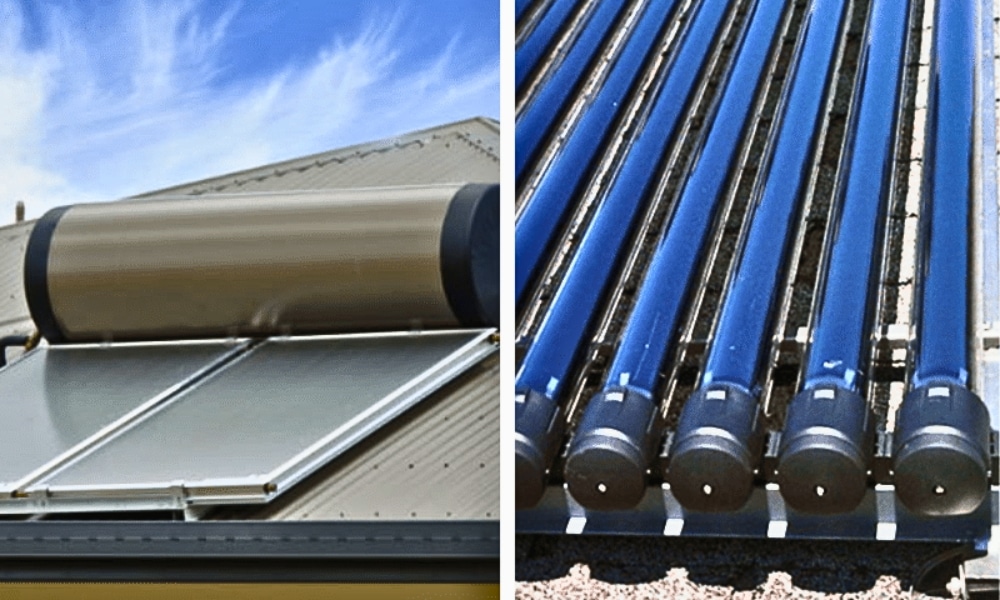
What is a solar hot water system?
A solar hot water system is a type of renewable energy system that uses solar panels to collect heat from the sun and transfer it to a storage tank. This heat is used to warm up water for your home or business.
How does a solar hot water system work?
Solar hot water systems typically consist of three main components:
- Solar panels: These solar panels are mounted on your roof and absorb heat from the sun.
- Storage tank: This tank stores the heated water from the solar panels.
- Circulation pump: This pump circulates the heated water from the storage tank to your faucets and showers.
When the sun shines on the solar panels, they heat a fluid that flows through them. This heated fluid is pumped to the storage tank, transferring heat to the water inside. The hot water is then available for use as needed. Check our page to learn more about How A Solar Hot Water System Works.
Solar hot water system prices in 2024
Flat plate systems
Flat plate solar water heating systems consist of a flat, rectangular absorber plate that is placed in an insulated metal box. The plate is painted black to absorb sunlight and is covered with a transparent glass or plastic cover to trap heat. Water or heat transfer fluid flows through tubes attached to the absorber plate, absorbing the heat and transferring it to a storage tank. Price starts at $3,000
Evacuated tube systems
Evacuated tube solar water heating systems use cylindrical glass tubes to collect and retain solar energy. Each tube contains a metal absorber plate coated with a selective absorptive material that absorbs sunlight and converts it into heat. The air is removed from the space between the inner and outer tubes to create a vacuum, which minimises heat loss. Water or heat transfer fluid flows through the tubes, absorbing the heat and transferring it to a storage tank. Price starts from $6,000.
Heat pump systems
Heat pump water heating systems use electricity to transfer heat from one place to another rather than generating heat directly. They work by extracting heat from the surrounding air or ground and transferring it to the water in a storage tank. Heat pumps are highly efficient, especially in moderate climates, as they can extract heat even from cold air or ground. Price starts from $3,000.
You can install a heat pump hot water system as an alternative to a conventional solar hot water system consisting of solar panels, a collector tank mounted on a roof spring, and solar hot water. Well planned and built, a heat pump system can yield a very rapid return on investment.
The benefits of switching to solar hot water systems
- Cost savings: Solar hot water systems can significantly reduce energy bills, as they utilise free energy from the sun.
- Environmentally friendly: Solar hot water systems reduce carbon emissions and dependence on fossil fuels, contributing to a cleaner environment.
- Energy independence: By harnessing solar energy, households can become less reliant on external energy sources, providing greater energy security.
- Long-term investment: Despite initial installation costs, solar hot water systems offer long-term savings and a potential return on investment over time.
- Low maintenance: Solar hot water systems require minimal maintenance, resulting in lower ongoing costs compared to traditional heating systems.
Solar hot water price analysis
Solar hot water systems have become increasingly popular in Australia due to their environmental benefits and potential cost savings. The price of a solar hot water system can vary significantly depending on factors such as the size and type of system, the location, and the installation costs. While the initial investment can be substantial, the long-term savings on energy bills can make it worthwhile.
When will you break even?
The break-even point for a solar hot water system depends on various factors, such as the initial installation cost, energy savings, and local incentives. Depending on factors like system efficiency, energy usage patterns, and regional sunlight availability, homeowners typically see a return on investment within 5 to 10 years.
Rebates and incentives
- Government rebates: Many governments offer rebates or financial incentives to encourage the adoption of solar hot water systems. These can significantly offset initial installation costs and accelerate the break-even period.
- Feed-in tariffs: In some regions, homeowners may receive payments for surplus energy generated by their solar hot water systems, further enhancing savings.
- Tax credits: Tax credits for renewable energy installations can reduce the overall cost of a solar hot water system. The availability and amount of these credits vary by jurisdiction.
Solar hot water installation costs
- Equipment: The solar collector, storage tank, and associated components form the bulk of the installation expense. The cost can vary depending on the system type (e.g., flat plate or evacuated tube), size, and brand.
- Labour: Professional installation by certified technicians ensures proper setup and integration with existing plumbing systems. Labour costs may vary depending on the complexity of the installation and local labour rates.
- Permitting and inspection: Obtaining necessary permits and undergoing inspections may incur additional fees, varying by location and regulatory requirements.
Solar hot water system prices vs. standard hot water expense
In Australia, where energy costs continue to rise, it’s crucial to consider the financial implications of your hot water system. Let’s compare the pricing and costs of solar hot water systems against traditional hot water expenses.
Solar hot water systems require an initial investment that may seem significant, but it’s a one-time expense that pays off over time. By harnessing abundant sunlight to heat water, these systems drastically reduce reliance on electricity or gas, resulting in substantial long-term savings on energy bills, particularly in sunnier regions like Queensland and Western Australia.
Moreover, the Australian government offers generous rebates and incentives to encourage the adoption of renewable energy technologies, further offsetting the installation cost.
On the other hand, traditional electric and gas-powered hot water systems often lead to hefty energy bills, especially during peak usage periods or colder months when more heating is required. Additionally, these standard systems entail regular maintenance, including repairs and replacements of components such as heating elements or gas burners, which can accumulate expenses over time.
Moreover, conventional hot water systems contribute to carbon emissions and environmental degradation due to their reliance on non-renewable energy sources, exacerbating their long-term environmental impact.

Make the switch to Solar Hot Water today! Complete our quick quiz and you’ll be contacted shortly.
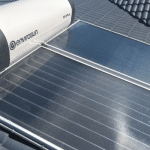
Do you have questions about solar hot water? View commonly asked questions and answers in our solar hot water FAQ

Rebates and Small-scale Technology Certificates on new and retrofit solar hot water systems can save you a lot of money! Learn more about the various solar hot water rebates that are available.
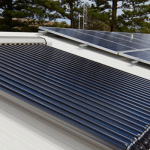
How do solar hot water systems work? How much energy and money can you save? Read our brief guide to solar hot water.
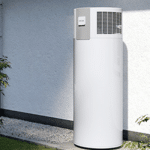
When you think of solar hot water, panels and a collector tank usually spring to mind. A heat pump utilises technology that doesn’t require panels! Learn more about heat pumps.
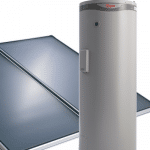
When used in solar hot water applications, which is better; a stainless steel or vitreous enamel (glass) lined hot water tank? A few points to help you in your decision as to what hot water tank suits your needs and situation.
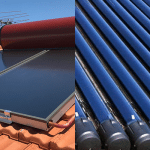
Which is the best type of collector for your solar hot water system? Learn more on our page about evacuated tube vs. flat plate collectors and view performance efficiency comparisons.

For over 17 years, Energy Matters has been a leader in the renewable energy industry in Australia! Learn more about us.
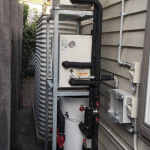
Solar power heated water can be used in commercial and industrial settings, plus it can also heat your entire home! Learn more about solar hydronics.









































